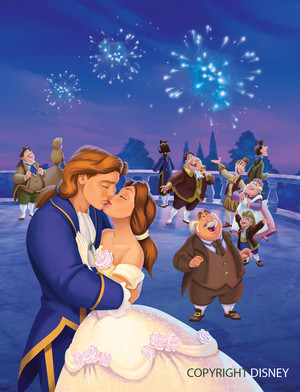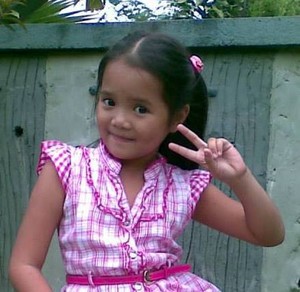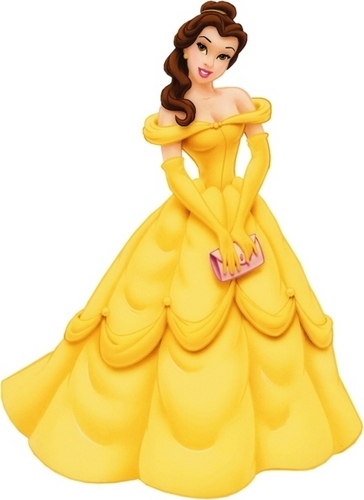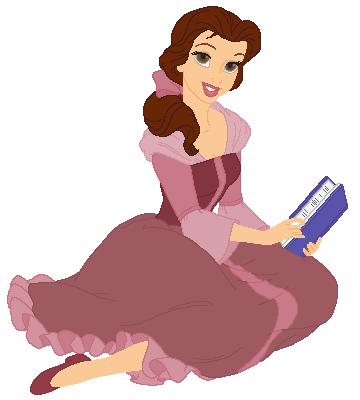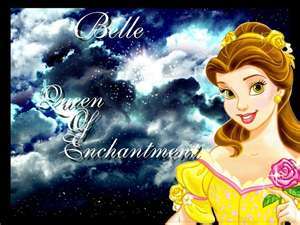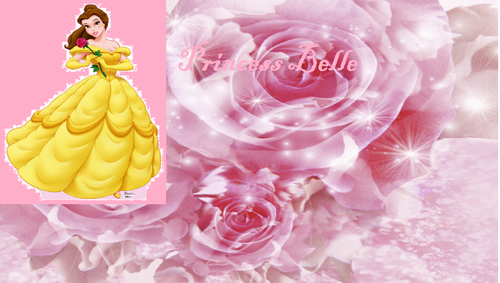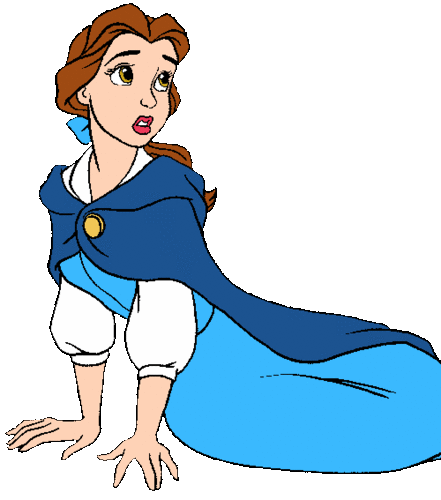The story of Beauty and the Beast has been around for centuries in both written and oral form, and और recently in film and video. Many experts trace similarities back to the stories of Cupid and Psyche, Oedipus and Apuleius’ The Golden नितंब, गधा of the सेकंड century A.D.
The tale of Beauty and the Beast was first collected in Gianfranceso Straparola’s Le piacevolo notti (The Nights of Straparola) 1550-53. The earliest French version is an ancient Basque tale where the father was a king and the beast a serpent. Charles Perrault popularized the fairy tale with his collection Contes de ma mere l’oye (Tales of Mother Goose) in 1697. The 17th century Pentamerone is also कहा to include similar tales.
The first truly similar tale to the one we know today was published in 1740 द्वारा Madame Gabrielle-Suzanne Barbot de Gallon de Villeneuve as part of a collection of stories La jeune amériquaine, et les contes marins (told द्वारा an old woman during a long sea voyage). Mme. de Villeneuve wrote fairy tale romances drawn from earlier literature and folk tales for the entertainment of her salon friends.
Almost half of the Villeneuve story revolves around warring परियों and the lengthy history of the parentage of both Beauty and the Prince. Beauty is one of 12 children, her stepfather is a merchant, her real father being the King of the Happy Isles. The क्वीन of the Happy Isles is both Beauty’s mother and the Dream Fairy Sister. Villeneuve also made various digs at the many enforced marriages that women had to प्रस्तुत करे to, and her Beauty ponders that many women are made to marry men far और beastly than her Beast. The story was 362 pages long.
French aristocrat Madame Jeanne-Marie Le Prince de Beaumont (1711 - 1780) emigrated to England in 1745 where she established herself as a tutor and writer of पुस्तकें on education and morals. She took Mme. de Villeneuve’s tale and shortened it, publishing it in 1756 as part of a collection entitled Magasin des enfants. Although taking all the key elements from the Mme. de Villeneuve story, Mme. de Beaumont omits some dream sequences and the fact that in the original the transformation to handsome prince takes place after the wedding night. Intended as a lesson for her students, some of the subversive edges were polished off the story. It is pretty well the version we consider traditional today. Mme. Le Prince de Beaumont’s story was translated into English as The Young Misses Magazine, Containing Dialogues between a Governess and Several Young Ladies of Quality, Her Scholars (1757).
The French tradition of the time was to unfold stories in a और everyday situation, with a tendency to substitute dramatic development founded on human emotions in place of actions based on magic forces. They eliminated whatever was bloody या cruel and relied on a story with direct action and without accessory actions, a style sober and unadorned. French storytellers subjected traditional stories to their own classical, logical, even rational taste. Perrault began this trend away from the traditional folk manner, and the ladies who followed him - Mlle. Lhéritier, Mme. d’Aulnoy and Mme. Le Prince de Beaumont - went even further. The lowliest of people in their tales are gentlemen, shepherds are princes in disguise, and the stories are peopled द्वारा the upper levels of the court. These influences over the story explain some of the differences we find between today’s Beauty and the Beast rooted in these French tales and और traditional versions.
Since its initial publishing the story has been revised many times. In 1756 the Comptesse de Genlis produced a play on the theme; in 1786 Mme. de Villeneuve reprinted her story as part of Le Cabinet des Fées et autres contes merveilleux.
The nineteenth century saw a proliferation of retellings in France, England and America. 68 different printed editions are listed in the Index to Fairy Tales. Notable versions include the 1811 poem द्वारा Charles Lamb, an 1841 ‘grand, romantic, operatic, melodramatic fairy extravaganza in 2 acts’ द्वारा J.R. Planchée which premiered April 12, 1811 at the Covent Garden Theatre with Mme. Vestris as Beauty, Walter Crane’s picture book in 1875, and Eleanor Vere Boyle’s illustrated novella of 1875.
Moving into this century we have been treated to the landmark film of Jean Cocteau (La Belle at la Bete), Walt डिज़्नी Studio’s cartoon adaptation and a science fiction Beauty द्वारा Tanith Lee. A fuller listing follows later.
The story of Beauty and the Beast appears in many other cultures in different forms. Aarne-Thompson lists 179 tales from different countries with a similar theme to Beauty and the Beast. There are usually three daughters, the youngest being the most kind and pure, her sisters displaying some of the undesirable traits of humankind. Beauty often has no name but is referred to as the youngest daughter. (For purposes of identification I shall use "Beauty" when referring to the heroine of the story.) There never seems to be a mother, thus omitting the possible conflicts a mother would have allowing her daughter to leave to live with a monster and allowing a closer relationship with the father who is, in most cases, wealthy. Although the Beast takes on many guises (serpent, wolf, even pig) he is never appealing in appearance but is rich and powerful. Hidden powers seem to guide the humans. At one point the Beauty is separated from her Beast and at that time some ill befalls him. Beauty’s remorse, sometimes as simple as shedding a tear and sometimes as onerous a penance as going to the end of the earth, saves the Beast and his transformation to handsome man is achieved.
Much psychological सूखी घास, घास has been made of the story of Beauty and the Beast; the men are all passive, the older women are less sympathetic, the youngest one pure and virginal and even the desired rose has come in for its share of analysis. To the Greeks and Romans the rose was a symbol of pleasure associated with extravagance and luxuriousness. It is considered the फूल of romance that ‘blushes with the warmth of worldly delights.’ Is the father dying in a literal sense या is he dying for the प्यार of his Beauty who is now devoted to the Beast?
As stories swap back and forth, new elements are introduced and exchanged. Folklorists have developed a system for categorizing stories, (e.g. the number 425A has been assigned to tale of the type "The Monster या Animal as Bridegroom"). Whatever the varying versions या systematic cataloging, the basic values that the stories convey are similar. The story and its सवालों regarding human values run deeper than the simple facts and details of the tale and remain timeless. We all have the potential to be beautiful या beastly; how do we overcome our ‘monsters’?
Return to Beauty and the Beast the ballet
Beauty and the Beast, The Madame Le Prince de Beaumont version.
The rich merchant not only has three daughters but also three sons who have little to do with the story. All the girls are good looking, particularly the youngest who becomes known as Little Beauty. The sisters are vain and jealous of Beauty who is द्वारा contrast modest and charming and wishes to stay with her father.
All of a sudden the family loses its money and is forced into a poorer lifestyle which makes life और difficult all around and exaggerates the differences between Beauty and her sisters. Beauty and the three brothers throw themselves into working for their new life while the sisters are bored. The father takes a trip in the hopes of regaining his wealth, and the older sisters demand he bring them expensive garments. Beauty asks simply for a rose.
The father is unsuccessful in his attempt to regain his wealth and in despair, wandering in the forest, is trapped in a snow storm. He comes upon a seemingly deserted palace where he finds खाना and shelter for the night. In the morning he wanders into the garden where he sees the perfect rose for Beauty. Upon plucking it, a hideous Beast appears and says that for his thievery he must die. The father begs for his life and, the Beast agrees to let him go if one of his daughters will take his place. If she refuses, then he must return to die himself. The Beast gives him a chest filled with सोना and sends him home. This treasure enables the older daughters to make fashionable marriages. On giving Beauty the rose, her father cannot help but tell her what happened. The brothers offer to slay the Beast but the father knows that they would die in the process. Beauty insists on taking her father’s place, and so she returns with him to the Beast’s palace where he reluctantly leaves her.
In a dream Beauty sees a beautiful lady who thanks her for her sacrifice and says that she will not go unrewarded. The Beast treats her well; all her wishes are met द्वारा magic. He visits her every evening for रात का खाना and gradually Beauty grows to look forwards to these meetings as a break to the monotony of her life. At the end of each visit the Beast asks Beauty to be his wife, which she refuses although agreeing never to leave the palace. Beauty sees in the magic mirror that her father is desperately missing her and asks that she might return to visit him. The Beast assents on the condition that she return in seven days, lest he die.
The अगला morning she is at home. Her father is overjoyed to see her but the sisters are once again jealous of Beauty, her newly found happiness and material comfort with the Beast. They persuade Beauty to stay longer, which she does, but on the tenth night she dreams of the Beast who is dying. Wishing herself back with him, she is transported back to the गढ़, महल where she finds the Beast dying of a broken heart. She realizes that she is desperately in प्यार with the Beast and says that she would gladly marry him. At this the Beast is transformed into a prince, the Father joins them at the palace and the sisters are turned into statues until they own up to their own faults.
The Prince and Beauty live happily ever after because their "contentment is founded on goodness."
The tale of Beauty and the Beast was first collected in Gianfranceso Straparola’s Le piacevolo notti (The Nights of Straparola) 1550-53. The earliest French version is an ancient Basque tale where the father was a king and the beast a serpent. Charles Perrault popularized the fairy tale with his collection Contes de ma mere l’oye (Tales of Mother Goose) in 1697. The 17th century Pentamerone is also कहा to include similar tales.
The first truly similar tale to the one we know today was published in 1740 द्वारा Madame Gabrielle-Suzanne Barbot de Gallon de Villeneuve as part of a collection of stories La jeune amériquaine, et les contes marins (told द्वारा an old woman during a long sea voyage). Mme. de Villeneuve wrote fairy tale romances drawn from earlier literature and folk tales for the entertainment of her salon friends.
Almost half of the Villeneuve story revolves around warring परियों and the lengthy history of the parentage of both Beauty and the Prince. Beauty is one of 12 children, her stepfather is a merchant, her real father being the King of the Happy Isles. The क्वीन of the Happy Isles is both Beauty’s mother and the Dream Fairy Sister. Villeneuve also made various digs at the many enforced marriages that women had to प्रस्तुत करे to, and her Beauty ponders that many women are made to marry men far और beastly than her Beast. The story was 362 pages long.
French aristocrat Madame Jeanne-Marie Le Prince de Beaumont (1711 - 1780) emigrated to England in 1745 where she established herself as a tutor and writer of पुस्तकें on education and morals. She took Mme. de Villeneuve’s tale and shortened it, publishing it in 1756 as part of a collection entitled Magasin des enfants. Although taking all the key elements from the Mme. de Villeneuve story, Mme. de Beaumont omits some dream sequences and the fact that in the original the transformation to handsome prince takes place after the wedding night. Intended as a lesson for her students, some of the subversive edges were polished off the story. It is pretty well the version we consider traditional today. Mme. Le Prince de Beaumont’s story was translated into English as The Young Misses Magazine, Containing Dialogues between a Governess and Several Young Ladies of Quality, Her Scholars (1757).
The French tradition of the time was to unfold stories in a और everyday situation, with a tendency to substitute dramatic development founded on human emotions in place of actions based on magic forces. They eliminated whatever was bloody या cruel and relied on a story with direct action and without accessory actions, a style sober and unadorned. French storytellers subjected traditional stories to their own classical, logical, even rational taste. Perrault began this trend away from the traditional folk manner, and the ladies who followed him - Mlle. Lhéritier, Mme. d’Aulnoy and Mme. Le Prince de Beaumont - went even further. The lowliest of people in their tales are gentlemen, shepherds are princes in disguise, and the stories are peopled द्वारा the upper levels of the court. These influences over the story explain some of the differences we find between today’s Beauty and the Beast rooted in these French tales and और traditional versions.
Since its initial publishing the story has been revised many times. In 1756 the Comptesse de Genlis produced a play on the theme; in 1786 Mme. de Villeneuve reprinted her story as part of Le Cabinet des Fées et autres contes merveilleux.
The nineteenth century saw a proliferation of retellings in France, England and America. 68 different printed editions are listed in the Index to Fairy Tales. Notable versions include the 1811 poem द्वारा Charles Lamb, an 1841 ‘grand, romantic, operatic, melodramatic fairy extravaganza in 2 acts’ द्वारा J.R. Planchée which premiered April 12, 1811 at the Covent Garden Theatre with Mme. Vestris as Beauty, Walter Crane’s picture book in 1875, and Eleanor Vere Boyle’s illustrated novella of 1875.
Moving into this century we have been treated to the landmark film of Jean Cocteau (La Belle at la Bete), Walt डिज़्नी Studio’s cartoon adaptation and a science fiction Beauty द्वारा Tanith Lee. A fuller listing follows later.
The story of Beauty and the Beast appears in many other cultures in different forms. Aarne-Thompson lists 179 tales from different countries with a similar theme to Beauty and the Beast. There are usually three daughters, the youngest being the most kind and pure, her sisters displaying some of the undesirable traits of humankind. Beauty often has no name but is referred to as the youngest daughter. (For purposes of identification I shall use "Beauty" when referring to the heroine of the story.) There never seems to be a mother, thus omitting the possible conflicts a mother would have allowing her daughter to leave to live with a monster and allowing a closer relationship with the father who is, in most cases, wealthy. Although the Beast takes on many guises (serpent, wolf, even pig) he is never appealing in appearance but is rich and powerful. Hidden powers seem to guide the humans. At one point the Beauty is separated from her Beast and at that time some ill befalls him. Beauty’s remorse, sometimes as simple as shedding a tear and sometimes as onerous a penance as going to the end of the earth, saves the Beast and his transformation to handsome man is achieved.
Much psychological सूखी घास, घास has been made of the story of Beauty and the Beast; the men are all passive, the older women are less sympathetic, the youngest one pure and virginal and even the desired rose has come in for its share of analysis. To the Greeks and Romans the rose was a symbol of pleasure associated with extravagance and luxuriousness. It is considered the फूल of romance that ‘blushes with the warmth of worldly delights.’ Is the father dying in a literal sense या is he dying for the प्यार of his Beauty who is now devoted to the Beast?
As stories swap back and forth, new elements are introduced and exchanged. Folklorists have developed a system for categorizing stories, (e.g. the number 425A has been assigned to tale of the type "The Monster या Animal as Bridegroom"). Whatever the varying versions या systematic cataloging, the basic values that the stories convey are similar. The story and its सवालों regarding human values run deeper than the simple facts and details of the tale and remain timeless. We all have the potential to be beautiful या beastly; how do we overcome our ‘monsters’?
Return to Beauty and the Beast the ballet
Beauty and the Beast, The Madame Le Prince de Beaumont version.
The rich merchant not only has three daughters but also three sons who have little to do with the story. All the girls are good looking, particularly the youngest who becomes known as Little Beauty. The sisters are vain and jealous of Beauty who is द्वारा contrast modest and charming and wishes to stay with her father.
All of a sudden the family loses its money and is forced into a poorer lifestyle which makes life और difficult all around and exaggerates the differences between Beauty and her sisters. Beauty and the three brothers throw themselves into working for their new life while the sisters are bored. The father takes a trip in the hopes of regaining his wealth, and the older sisters demand he bring them expensive garments. Beauty asks simply for a rose.
The father is unsuccessful in his attempt to regain his wealth and in despair, wandering in the forest, is trapped in a snow storm. He comes upon a seemingly deserted palace where he finds खाना and shelter for the night. In the morning he wanders into the garden where he sees the perfect rose for Beauty. Upon plucking it, a hideous Beast appears and says that for his thievery he must die. The father begs for his life and, the Beast agrees to let him go if one of his daughters will take his place. If she refuses, then he must return to die himself. The Beast gives him a chest filled with सोना and sends him home. This treasure enables the older daughters to make fashionable marriages. On giving Beauty the rose, her father cannot help but tell her what happened. The brothers offer to slay the Beast but the father knows that they would die in the process. Beauty insists on taking her father’s place, and so she returns with him to the Beast’s palace where he reluctantly leaves her.
In a dream Beauty sees a beautiful lady who thanks her for her sacrifice and says that she will not go unrewarded. The Beast treats her well; all her wishes are met द्वारा magic. He visits her every evening for रात का खाना and gradually Beauty grows to look forwards to these meetings as a break to the monotony of her life. At the end of each visit the Beast asks Beauty to be his wife, which she refuses although agreeing never to leave the palace. Beauty sees in the magic mirror that her father is desperately missing her and asks that she might return to visit him. The Beast assents on the condition that she return in seven days, lest he die.
The अगला morning she is at home. Her father is overjoyed to see her but the sisters are once again jealous of Beauty, her newly found happiness and material comfort with the Beast. They persuade Beauty to stay longer, which she does, but on the tenth night she dreams of the Beast who is dying. Wishing herself back with him, she is transported back to the गढ़, महल where she finds the Beast dying of a broken heart. She realizes that she is desperately in प्यार with the Beast and says that she would gladly marry him. At this the Beast is transformed into a prince, the Father joins them at the palace and the sisters are turned into statues until they own up to their own faults.
The Prince and Beauty live happily ever after because their "contentment is founded on goodness."


